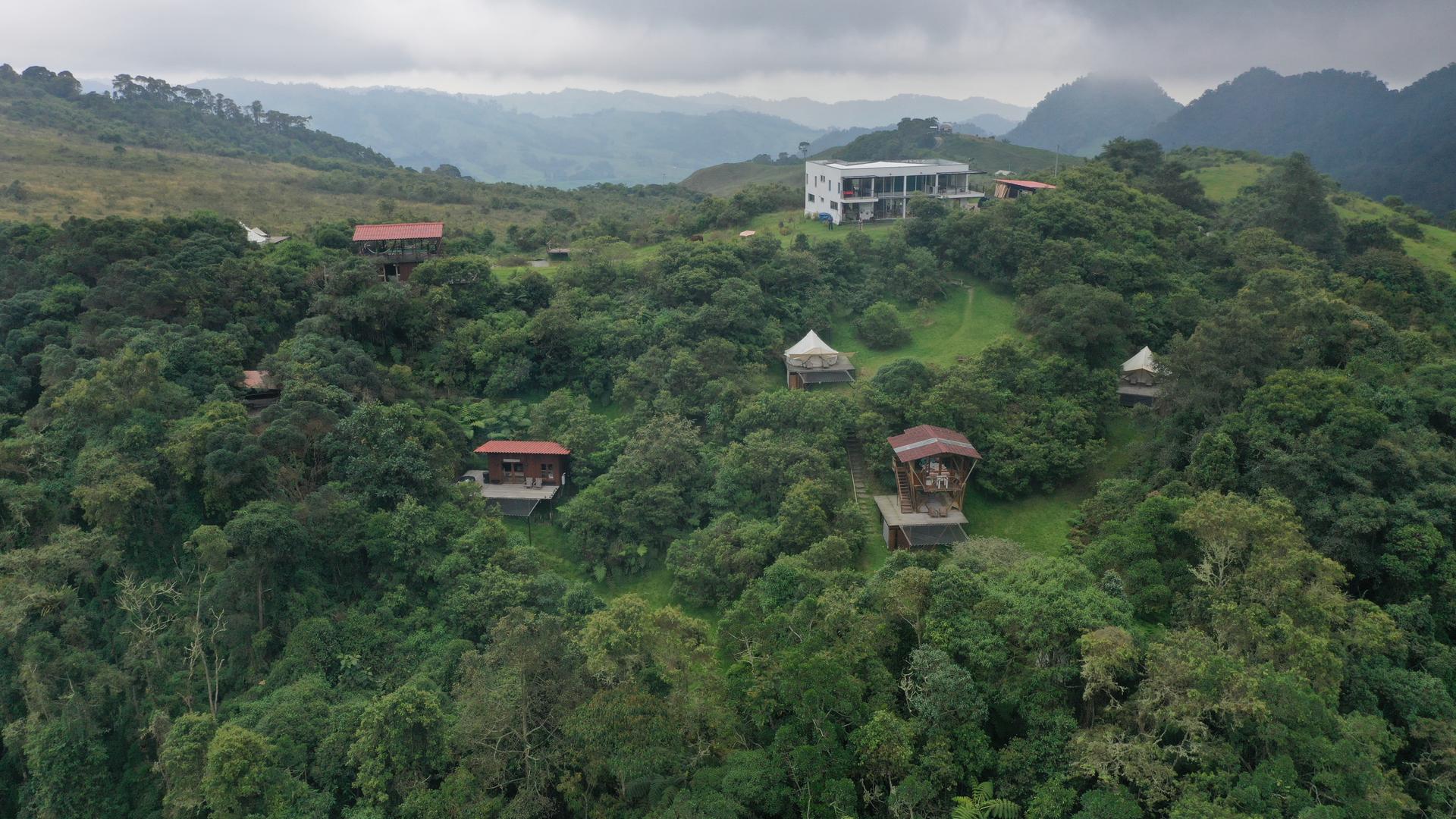It’s early in the morning, and tourists are peering over a wooden balcony to take a look at a tiny bird.
Hopping among the ferns and leaves on the forest floor is the crescent-faced antpitta, a bird the size of a tennis ball, with large eyes and a tiny beak.

Bird-watchers love this species because it’s very hard to spot, said Juan Lopez, a nature guide who’s traveling with two British tourists.
“Before this place existed, the only option to see this antpitta was in Ecuador. But you had to walk for two days, and go camping there to see it.”
“Before this place existed, the only option to see this antpitta was in Ecuador,” he explained. “But you had to walk for two days, and go camping there to see it.”
Related: Many Venezuelan migrants in Latin America struggle to get vaccinated
Now, tourists can admire the antpitta — and other unique species — at a bird-watching lodge in Hacienda El Bosque, a large dairy farm near the Colombian city of Manizales.
Hacienda El Bosque is one of the dozens of Colombian farms that are taking a chance on nature tourism, and are trying to turn conservation into a profitable venture as one way to stave off deforestation.
Deforestation grew by 8% in Colombia last year, with the South American country losing about 170,000 hectares of its forests to industries like cattle ranching and illegal mining.
Hacienda el Bosque is located in the Andes mountains at 10,000 feet above sea level. It has an area of 1,000 hectares, out of which almost half is covered by cloud forest.
Related: Reclaiming Colombia’s Black history, one tour at a time
The ranch used to get all of its income from selling milk. But it opened its doors to bird-watchers three years ago in order to generate new sources of income.

Its owners have realized that the Andean cloud forests that surround the farm attract dozens of migratory birds and are also home to endemic species. So, instead of clearing the forest to make more space for cattle, they have decided to protect it.
“Thirty years ago my father started to protect some of the forest because he wanted to keep our sources of water safe,” said Juan Martin Perez, one of the owners.
“Now, we are using these forests to create a beautiful experience for tourists, especially those interested in bird-watching and photography.”
“Now, we are using these forests to create a beautiful experience for tourists, especially those interested in bird-watching and photography.”
Three cabins have been built for visitors who want to sleep over. As well as observation decks and a trail through the estate’s forested area.
Perez is hoping that next year the farm will make 50% of its revenues from tourism. Milk sales have fallen recently, he said, because of international trade deals.
“For us, it’s important to diversify, and look for alternatives,” Perez said. “And there are many people from China, the United States and Europe who want to come here to bird-watch.”
He’s not the only one thinking along these lines.
Within an hour’s drive of Hacienda El Bosque, there are two coffee estates and some smaller farms that also offer bird-watching tours.
At El Color de Mis Reves, or the Color of My Dreams, one of the main attractions is the black-billed mountain-toucan.

There, a guide hangs some grapes from a branch and lures the toucan with a call that comes from a speaker. Within 20 minutes, the colorful bird lands on the branch, eats a grape and starts to crackle.
The farm is owned by Andres Giraldo, a retired businessman who moved there to be away from the city.
Related: In Colombia, companies expedite vaccine rollout with private funds
It’s located next to a nature reserve. And Giraldo is letting the forest regrow all around his property to give more space to the wildlife. The forest cover here is only interrupted by four log cabins and two yurts where tourists can spend the night.

“This is not a business that turns a profit overnight, it takes some time,” Giraldo said. “But we are doing this because we are passionate about conservation. We want people to learn about the birds, and the forest and the value it has in our lives.”
Around 1,900 bird species have been spotted in Colombia so far, more than in any other country. So, there’s plenty to show to tourists. As long as bird habitats are preserved.
